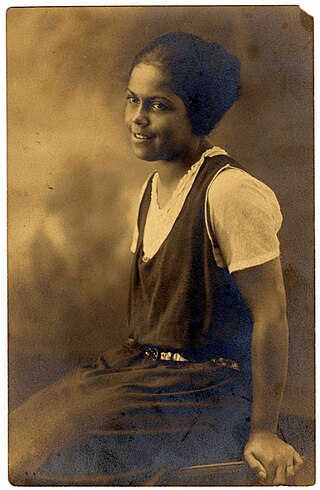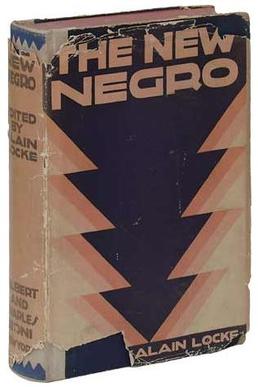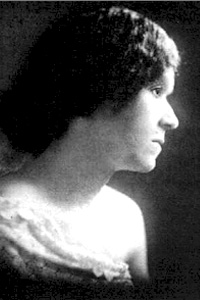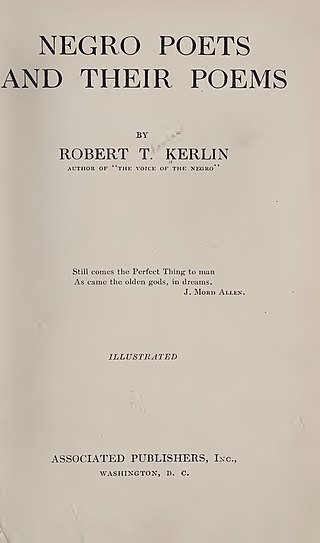Related Research Articles

Countee Cullen was an American poet, novelist, children's writer, and playwright, particularly well known during the Harlem Renaissance.

Arna Wendell Bontemps was an American poet, novelist and librarian, and a noted member of the Harlem Renaissance.

Helene Johnson was an African-American poet during the Harlem Renaissance. Though her career as a poet was relatively short-lived, she is remembered today for her poetry that captures both the challenges and the excitement of this era.

Gwendolyn B. Bennett was an American artist, writer, and journalist who contributed to Opportunity: A Journal of Negro Life, which chronicled cultural advancements during the Harlem Renaissance. Though often overlooked, she herself made considerable accomplishments in art, poetry, and prose. She is perhaps best known for her short story "Wedding Day", which was published in the magazine Fire!! and explores how gender, race, and class dynamics shape an interracial relationship. Bennett was a dedicated and self-preserving woman, respectfully known for being a strong influencer of African-American women rights during the Harlem Renaissance. Throughout her dedication and perseverance, Bennett raised the bar when it came to women's literature and education. One of her contributions to the Harlem Renaissance was her literary acclaimed short novel Poets Evening; it helped the understanding within the African-American communities, resulting in many African Americans coming to terms with identifying and accepting themselves.

The New Negro: An Interpretation (1925) is an anthology of fiction, poetry, and essays on African and African-American art and literature edited by Alain Locke, who lived in Washington, DC, and taught at Howard University during the Harlem Renaissance. As a collection of the creative efforts coming out of the burgeoning New Negro Movement or Harlem Renaissance, the book is considered by literary scholars and critics to be the definitive text of the movement. "The Negro Renaissance" included Locke's title essay "The New Negro", as well as nonfiction essays, poetry, and fiction by writers including Countee Cullen, Langston Hughes, Zora Neale Hurston, Claude McKay, Jean Toomer, and Eric Walrond.

The Schomburg Center for Research in Black Culture is a research library of the New York Public Library (NYPL) and an archive repository for information on people of African descent worldwide. Located at 515 Malcolm X Boulevard between West 135th and 136th Streets in the Harlem neighborhood of Manhattan, New York City, it has, almost from its inception, been an integral part of the Harlem community. It is named for Afro-Puerto Rican scholar Arturo Alfonso Schomburg.
Owen Vincent Dodson was an American poet, novelist, and playwright. He was one of the leading African-American poets of his time, associated with the generation of black poets following the Harlem Renaissance. He received a fellowship from the Rosenwald Foundation for a series of one-act plays.

Georgia Blanche Douglas Camp Johnson, better known as Georgia Douglas Johnson, was a poet and playwright. She was one of the earliest female African-American playwrights, and an important figure of the Harlem Renaissance.

The Harlem Renaissance was an intellectual and cultural revival of African American music, dance, art, fashion, literature, theater, politics and scholarship centered in Harlem, Manhattan, New York City, spanning the 1920s and 1930s. At the time, it was known as the "New Negro Movement", named after The New Negro, a 1925 anthology edited by Alain Locke. The movement also included the new African American cultural expressions across the urban areas in the Northeast and Midwest United States affected by a renewed militancy in the general struggle for civil rights, combined with the Great Migration of African American workers fleeing the racist conditions of the Jim Crow Deep South, as Harlem was the final destination of the largest number of those who migrated north.

William Stanley Beaumont Braithwaite was an African-American writer, poet, literary critic, anthologist, and publisher in the United States. His work as a critic and anthologist was widely praised and important in the development of East Coast poetry styles in the early 20th century. He was awarded the Spingarn Medal in 1918.

Fenton Johnson was an American poet, essayist, author of short stories, editor, and educator. Johnson came from a middle-class African-American family in Chicago, where he spent most of his career. His work is often included in anthologies of 20th-century poetry, and he is noted for early prose poetry. Author James Weldon Johnson called Fenton, "one of the first Negro revolutionary poets”. He is also considered a forerunner of the Harlem Renaissance.

"The Negro Speaks of Rivers" is a poem by American writer Langston Hughes. Hughes wrote the poem when he was 17 and crossing the Mississippi River on the way to visit his father in Mexico. It was first published the following year in The Crisis, starting Hughes's literary career. "The Negro Speaks of Rivers" uses rivers as a metaphor for Hughes's life and the broader African-American experience. It has been reprinted often and is considered one of Hughes's most famous and signature works.

William Waring Cuney was a poet of the Harlem Renaissance. He is best known for his poem "No Images," which has been widely anthologized.
Lewis Grandison Alexander was an American poet, actor, playwright, and costume designer who lived in Washington, D.C., and had strong ties to the Harlem Renaissance period in New York. Alexander focused most of his time and creativity on poetry, and it is for this that he is best known.

Gladys May Casely-HayfordaliasAquah Laluah was a Gold Coast-born Sierra Leonean writer. She is credited as the first author to write in the Krio language.

Clarissa Scott Delany, neeClarissa Mae Scott (1901–1927) was an African-American poet, essayist, educator and social worker associated with the Harlem Renaissance.

Harold Jackman was a British-born teacher, model, and patron of the arts with emphasis on African American art and literature. Raised in Harlem, Jackman was known for his involvement in the Harlem Renaissance and his dedication to preserving African American cultural artifacts. He founded the Countee Cullen Memorial Collection at Atlanta University and contributed to the James Weldon Johnson Collection of Yale University, the Literary Collection of Fisk University, and to the Schomburg Collection at the Harlem branch of the New York Public Library. Along with Regina M. Anderson and Dorothy Randolph Peterson, he was also a co-founder of the Harlem Experimental Theater.
The Book of American Negro Poetry is a 1922 poetry anthology that was compiled by James Weldon Johnson. The first edition, published in 1922, was "the first of its kind ever published" and included the works of thirty-one poets. A second edition was released in 1931 with works by nine additional poets.

Negro Poets and Their Poems is a 1923 poetry collection by Robert T. Kerlin. It was one of the major anthologies of African American poetry published during the Harlem Renaissance and has been cited as a valuable source of information on the era.
An Anthology of Verse by American Negroes is a 1924 poetry anthology compiled by Newman Ivey White and Walter Clinton Jackson. The anthology is considered one of the major anthologies of black poetry to be published during the Harlem Renaissance, and was republished in 1969. In reviews, the anthology has been positively received for the effort it made to compile poetry, but criticized for ambiguous criticism and poor selection of poems.
References
- 1 2 "An Introduction to the Harlem Renaissance". Poetry Foundation. 2021-02-19. Retrieved 2021-02-19.
- 1 2 3 Wintz, Cary D.; Finkelman, Paul (2004). Encyclopedia of the Harlem Renaissance: K-Y. Taylor & Francis. pp. 727–730. ISBN 978-1-57958-458-0.
- 1 2 3 4 The Schomburg Center guide to black literature : from the eighteenth century to the present. Roger M. Valade, Denise Kasinec, Schomburg Center for Research in Black Culture. Detroit: Gale Research. 1996. p. 82. ISBN 0-7876-0289-2. OCLC 32924112.
{{cite book}}: CS1 maint: others (link) - 1 2 3 4 5 6 7 Jordan, June (1974). "The Black Poet Speaks Of Poetry: A Column: Essay and Review of Countee Cullen's Anthology, 'Caroling Dusk'". The American Poetry Review . 3 (3): 49–51. ISSN 0360-3709.
- ↑ Roses, Lorraine Elena (1990). Harlem Renaissance and beyond : literary biographies of 100 Black women writers, 1900-1945. Ruth Elizabeth Randolph. Boston, Mass.: G.K. Hall. p. 337. ISBN 0-8161-8926-9. OCLC 20261851.
- ↑ Park, Robert E. (1928). "Review of Rainbow Round My Shoulder. The Blue Trail of Black Ulysses., , ; Negro Workaday Songs., , ; Folk Beliefs of the Southern Negro., ; Congaree Sketches., ; Singing Soldiers., , ; Plays of Negro Life., , , ; Caroling Dusk., , ; God's Trombones., ; Ebony and Topaz: A Collectanea., ; Religious Folk-Songs of the Negro, as Sung at Hampton Institute". American Journal of Sociology . 33 (6): 988–995. ISSN 0002-9602. JSTOR 2765991.
- ↑ Aguasoscuras, Conde (October 13, 1929). "Collection of Poems by Negro Lyricists". Sioux City Journal . p. 34 – via Newspapers.com
 .
. - ↑ Bryant, Girard T. (1974-04-20). "Contrast to Protest Poetry". The Kansas City Times. p. 50. Retrieved 2021-02-15– via Newspapers.com
 .
.